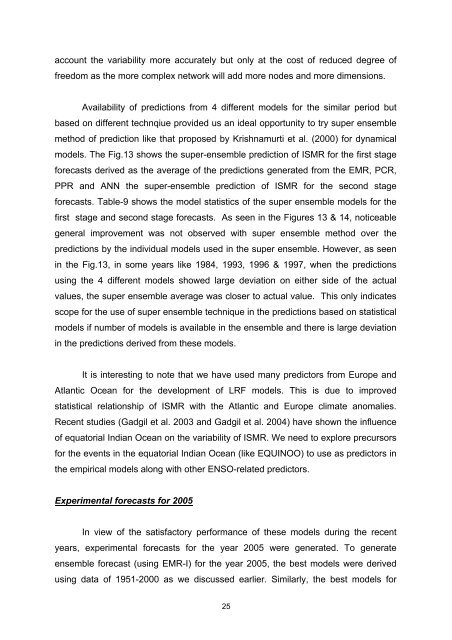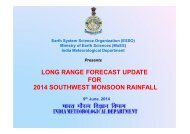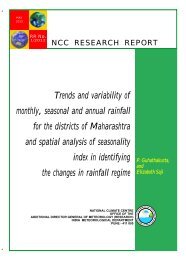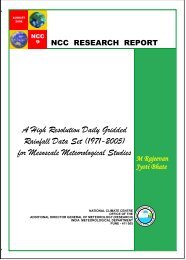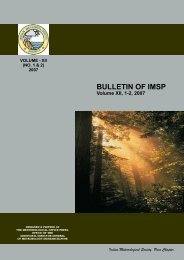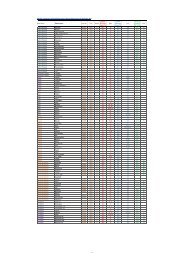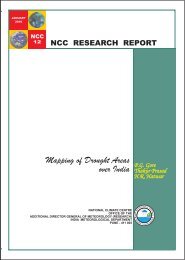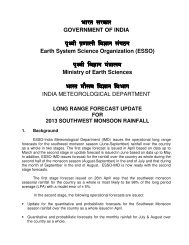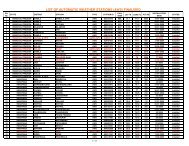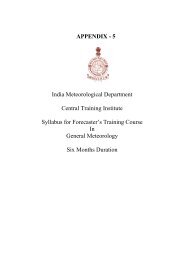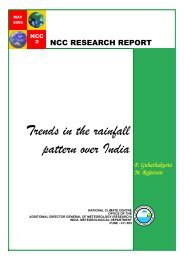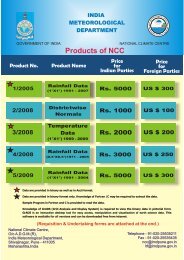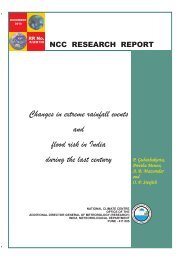NCC Report No. 1 - (IMD), Pune
NCC Report No. 1 - (IMD), Pune
NCC Report No. 1 - (IMD), Pune
You also want an ePaper? Increase the reach of your titles
YUMPU automatically turns print PDFs into web optimized ePapers that Google loves.
account the variability more accurately but only at the cost of reduced degree offreedom as the more complex network will add more nodes and more dimensions.Availability of predictions from 4 different models for the similar period butbased on different technqiue provided us an ideal opportunity to try super ensemblemethod of prediction like that proposed by Krishnamurti et al. (2000) for dynamicalmodels. The Fig.13 shows the super-ensemble prediction of ISMR for the first stageforecasts derived as the average of the predictions generated from the EMR, PCR,PPR and ANN the super-ensemble prediction of ISMR for the second stageforecasts. Table-9 shows the model statistics of the super ensemble models for thefirst stage and second stage forecasts. As seen in the Figures 13 & 14, noticeablegeneral improvement was not observed with super ensemble method over thepredictions by the individual models used in the super ensemble. However, as seenin the Fig.13, in some years like 1984, 1993, 1996 & 1997, when the predictionsusing the 4 different models showed large deviation on either side of the actualvalues, the super ensemble average was closer to actual value. This only indicatesscope for the use of super ensemble technique in the predictions based on statisticalmodels if number of models is available in the ensemble and there is large deviationin the predictions derived from these models.It is interesting to note that we have used many predictors from Europe andAtlantic Ocean for the development of LRF models. This is due to improvedstatistical relationship of ISMR with the Atlantic and Europe climate anomalies.Recent studies (Gadgil et al. 2003 and Gadgil et al. 2004) have shown the influenceof equatorial Indian Ocean on the variability of ISMR. We need to explore precursorsfor the events in the equatorial Indian Ocean (like EQUINOO) to use as predictors inthe empirical models along with other ENSO-related predictors.Experimental forecasts for 2005In view of the satisfactory performance of these models during the recentyears, experimental forecasts for the year 2005 were generated. To generateensemble forecast (using EMR-I) for the year 2005, the best models were derivedusing data of 1951-2000 as we discussed earlier. Similarly, the best models for25


